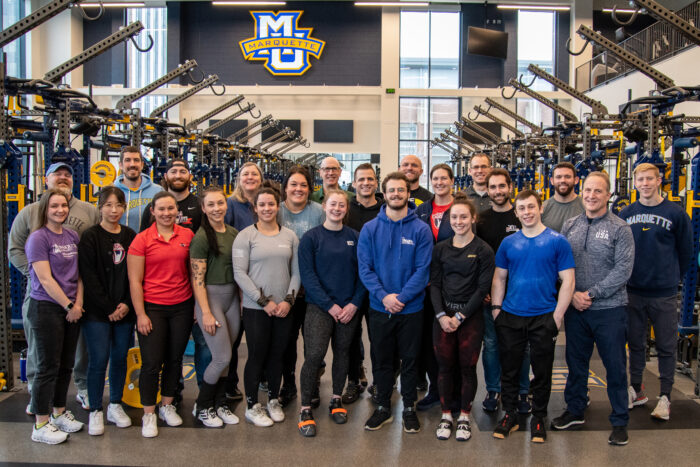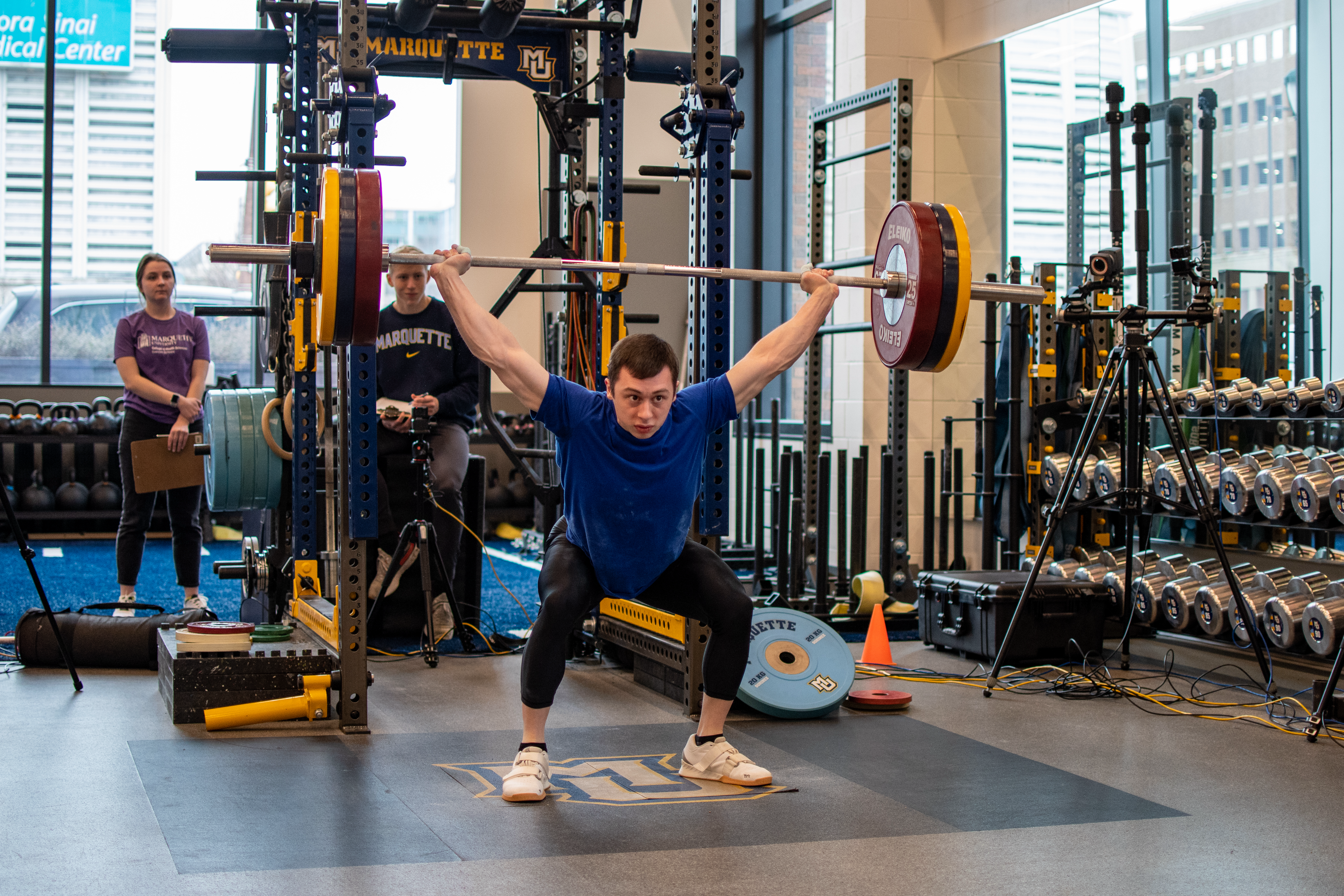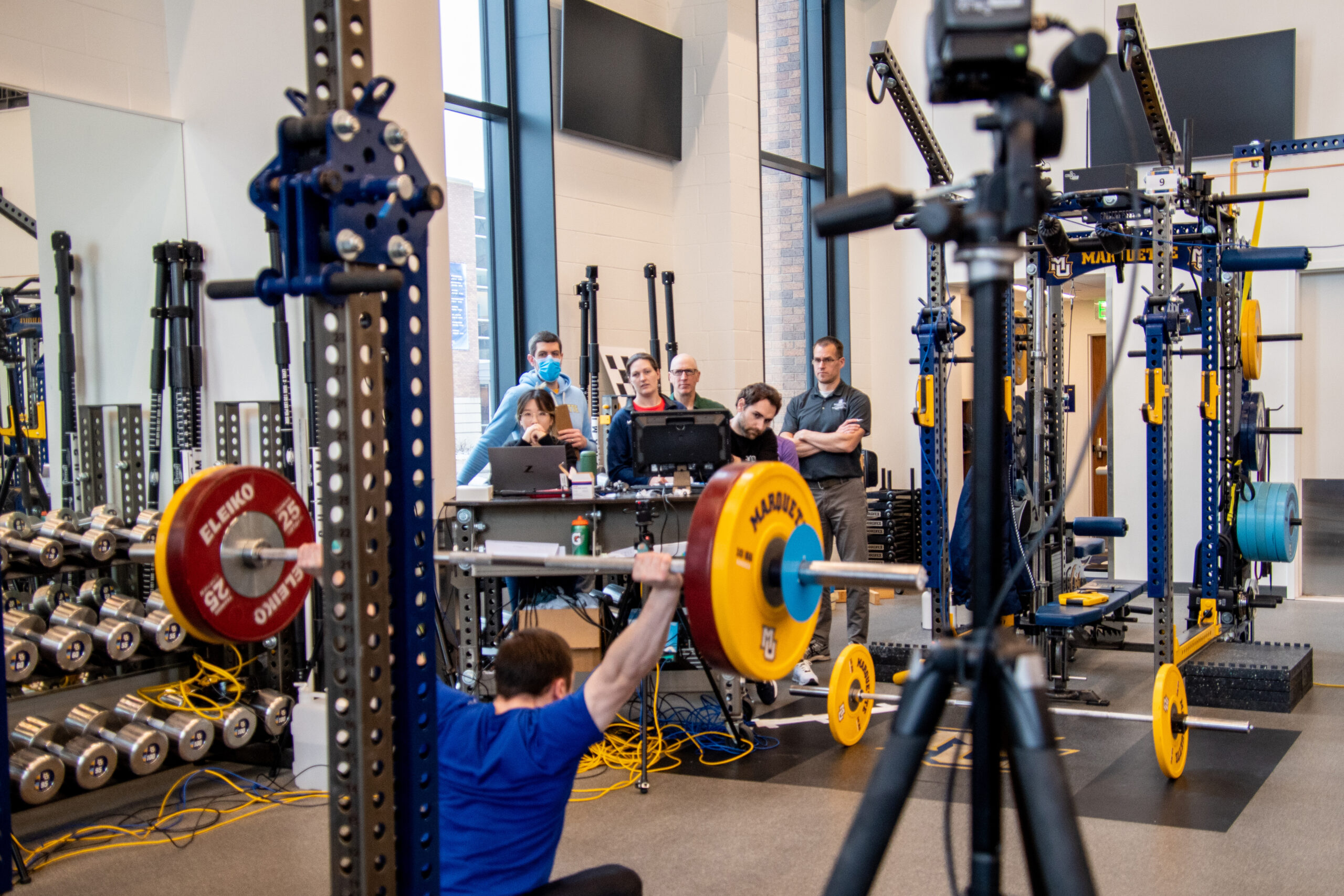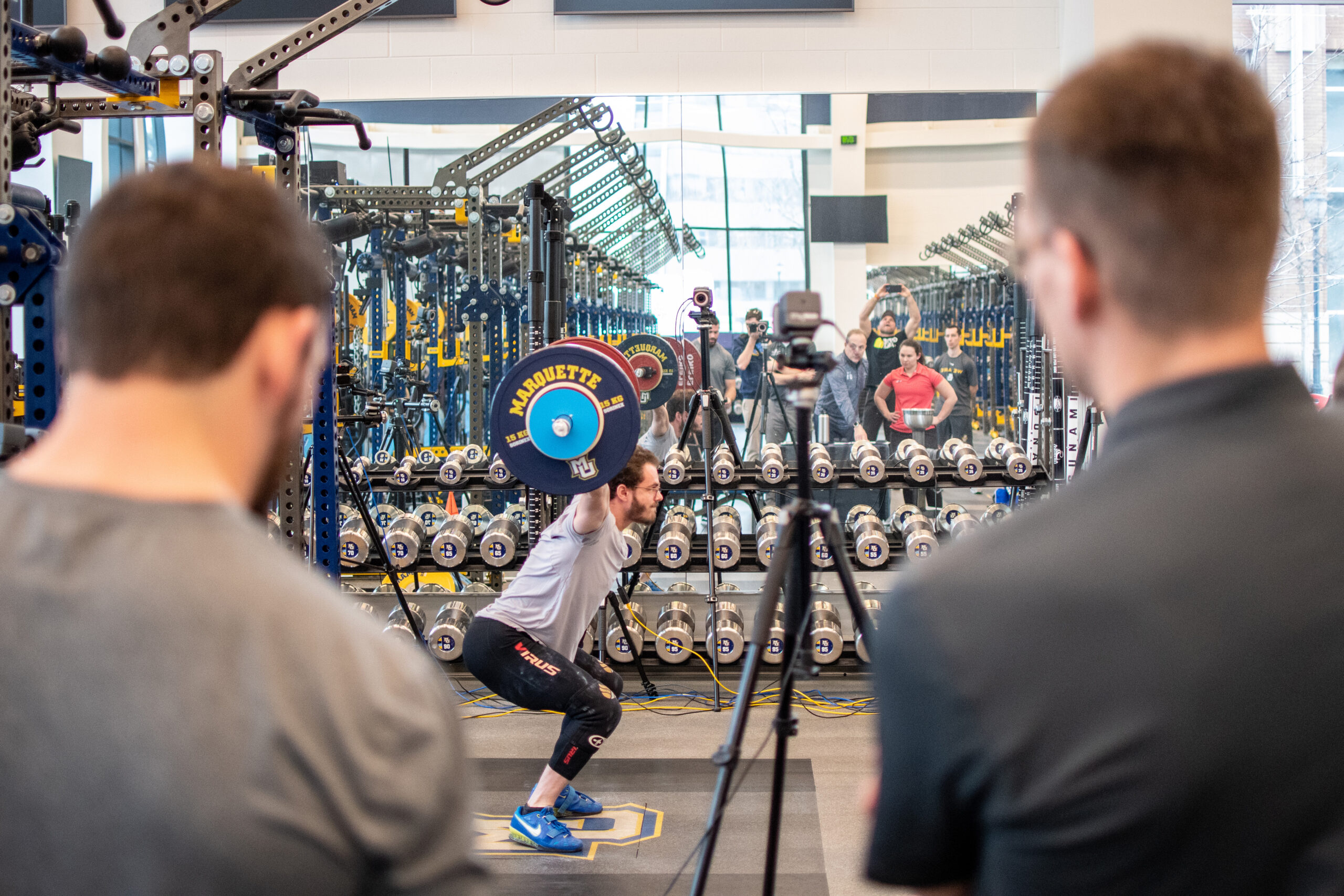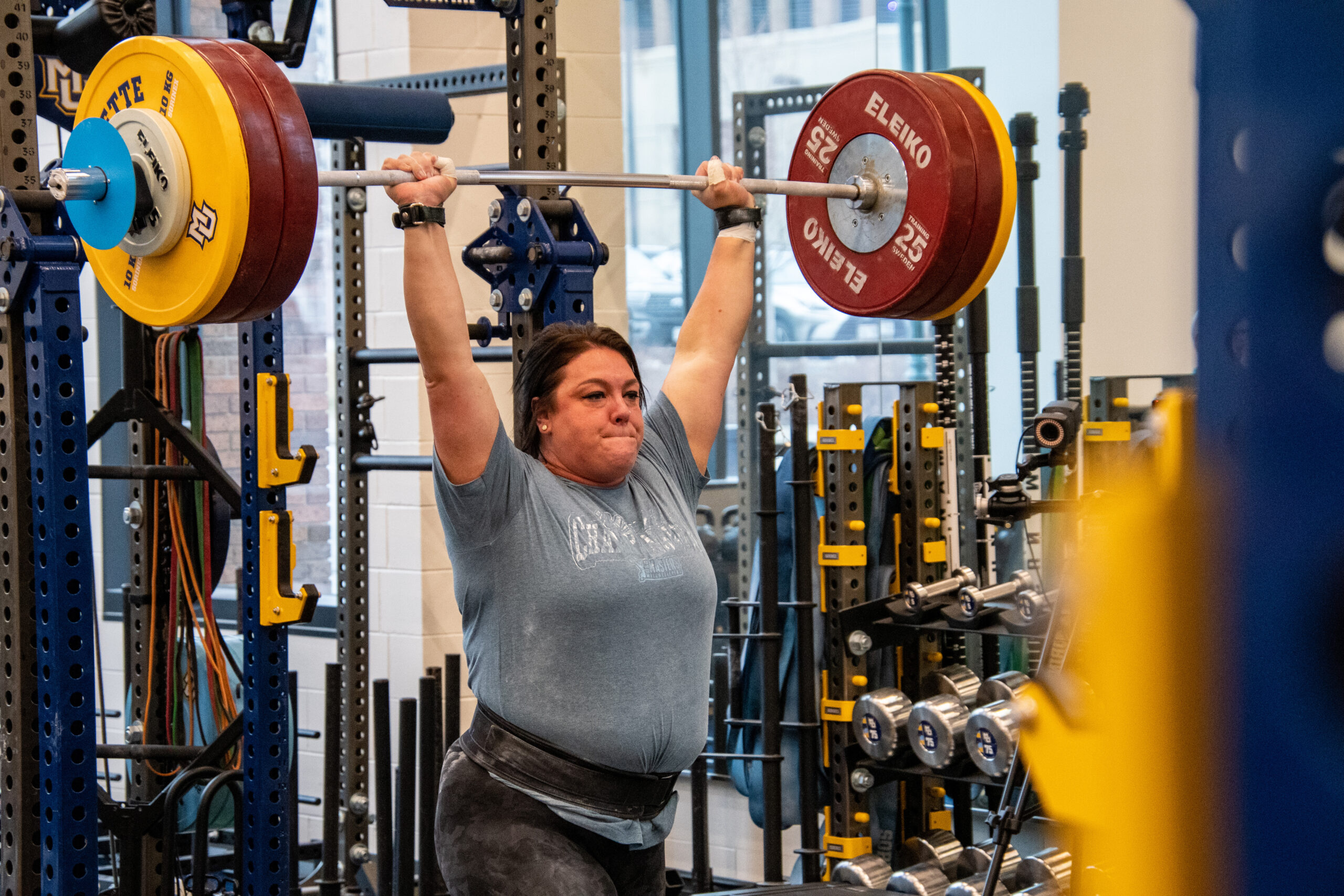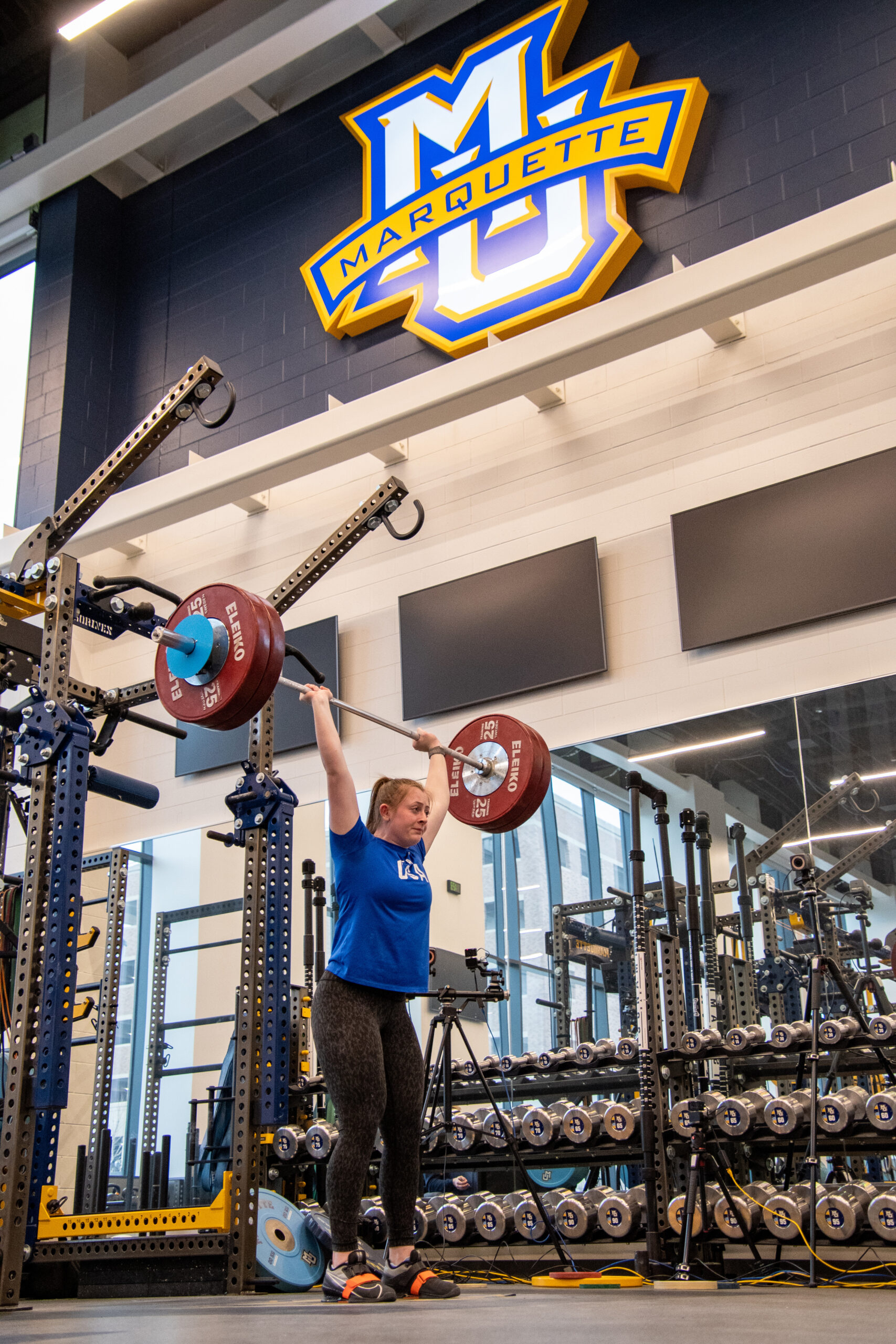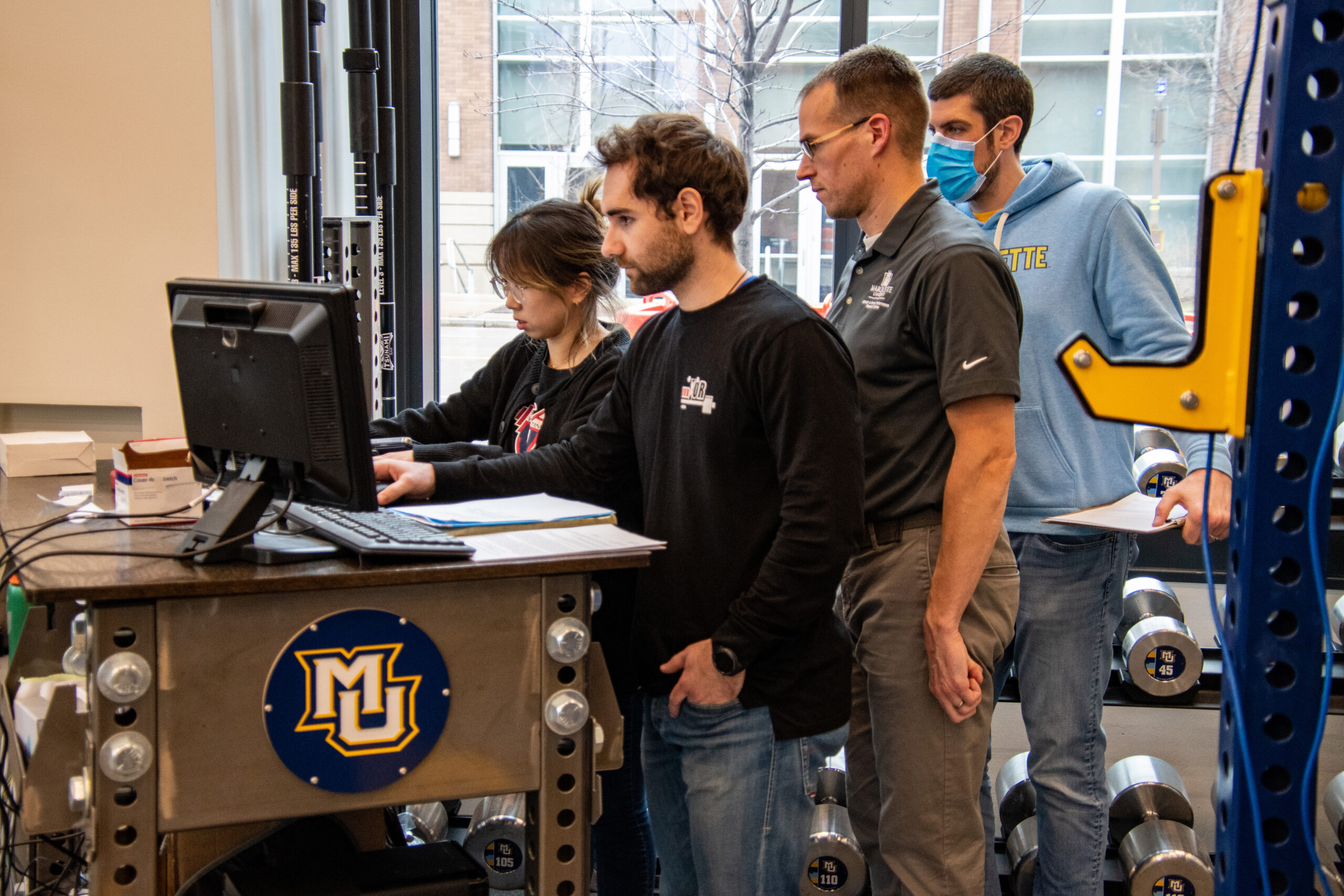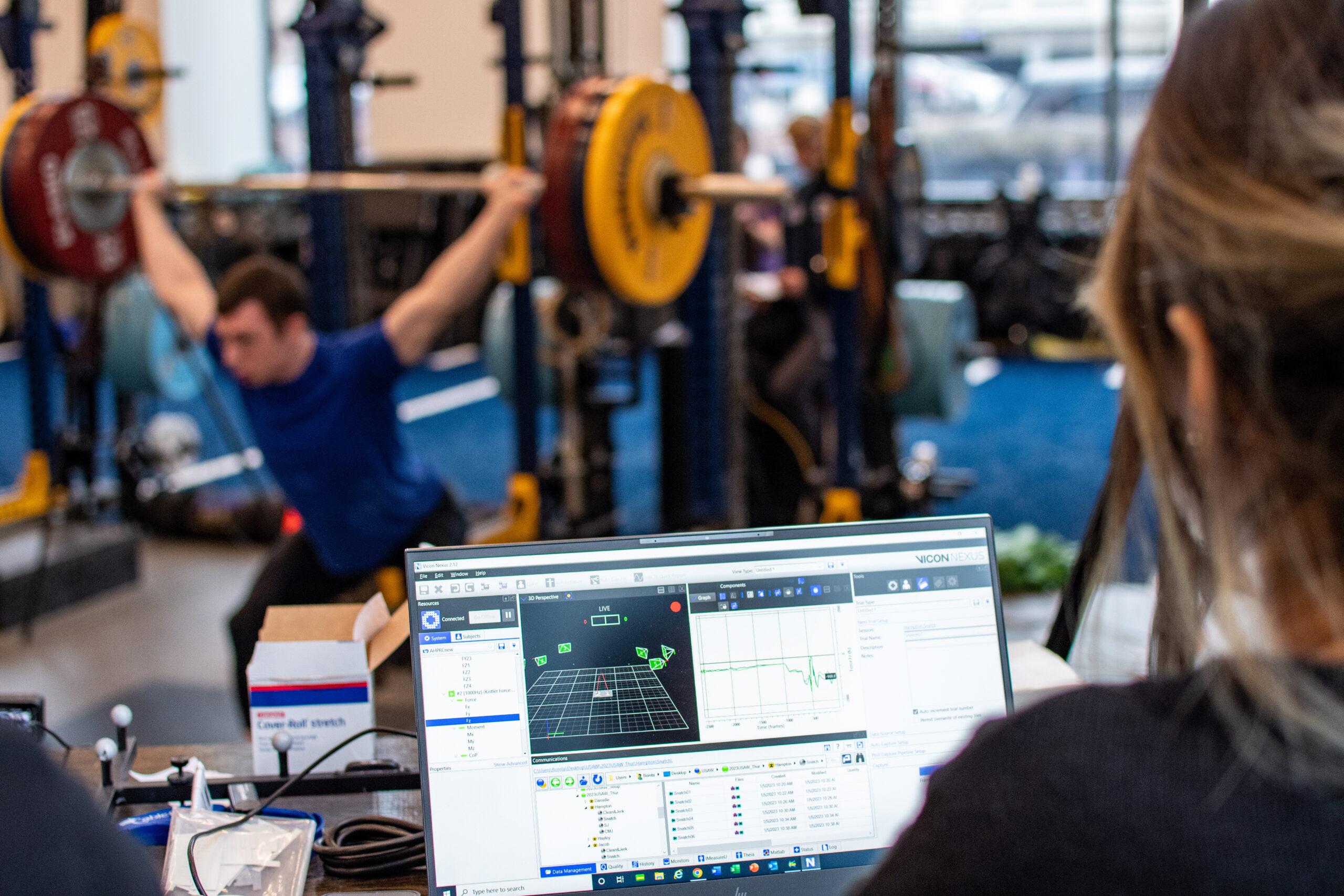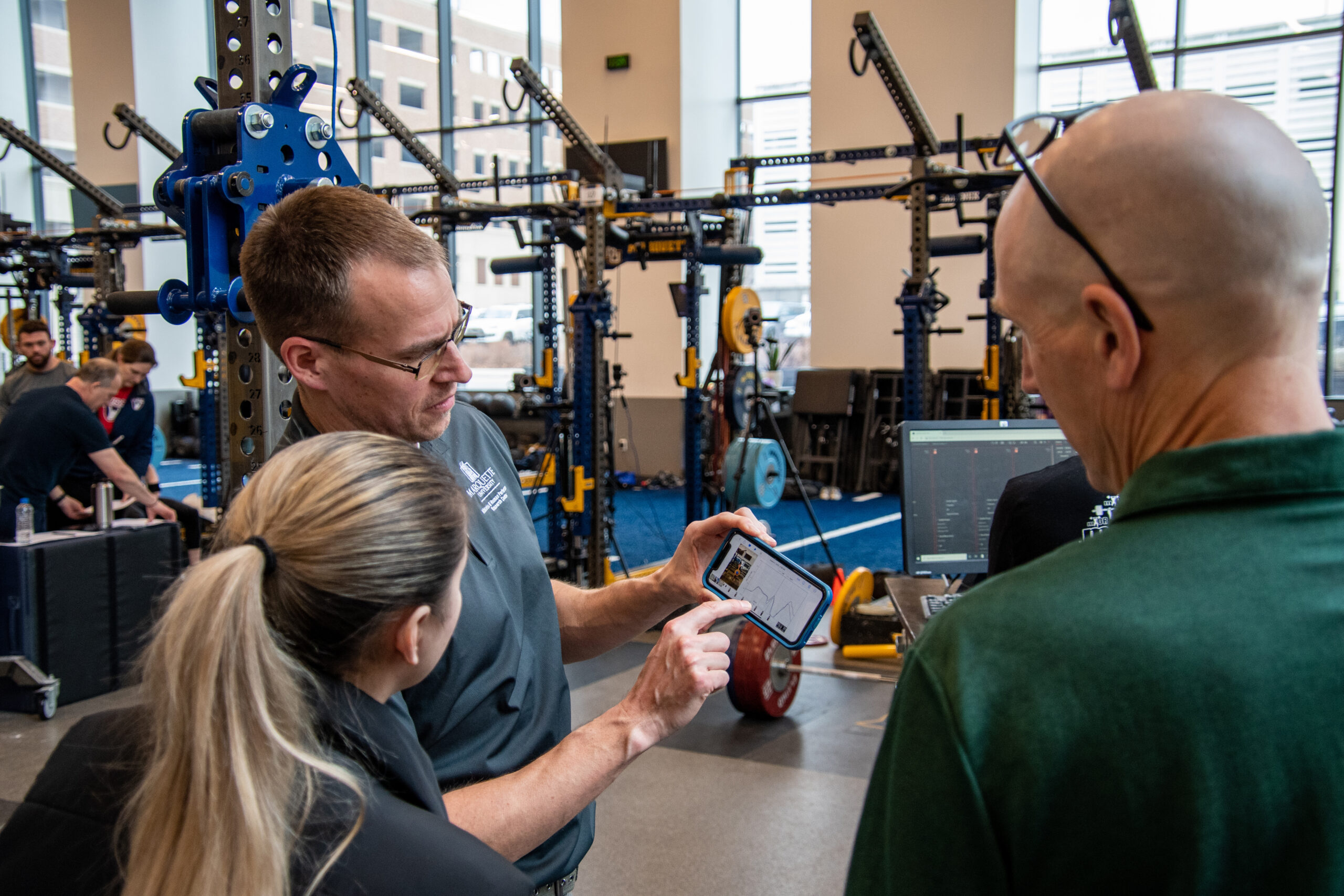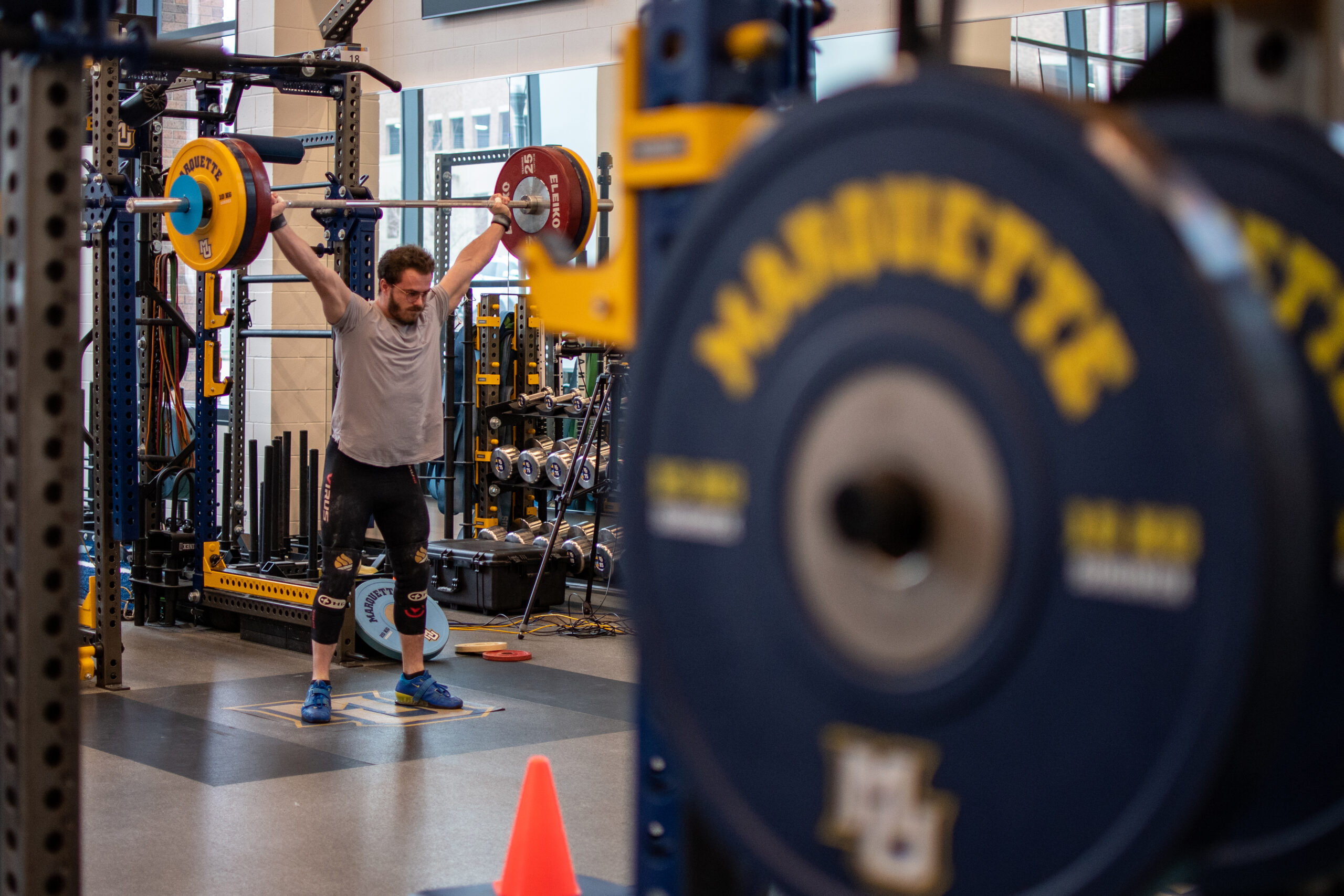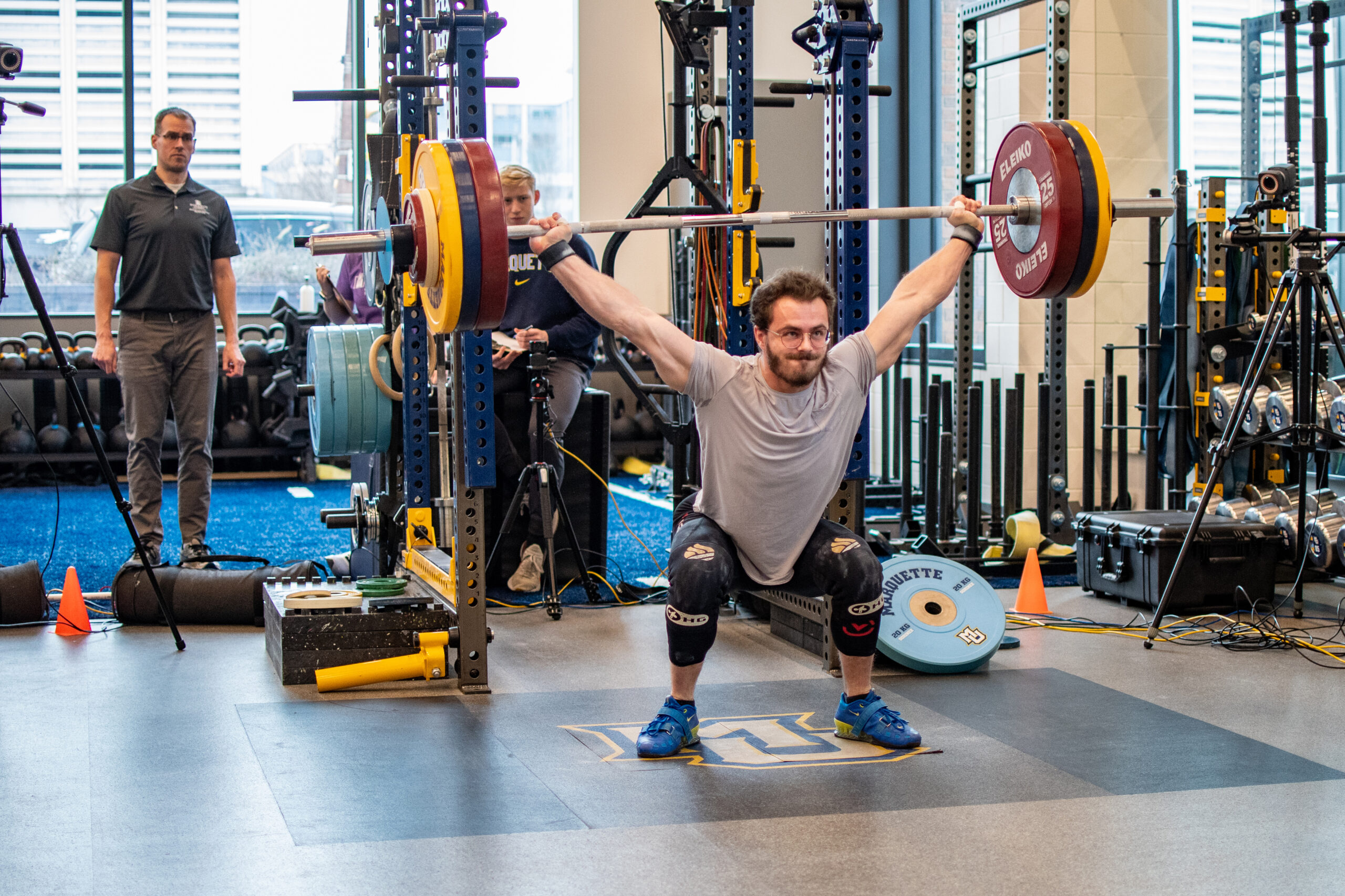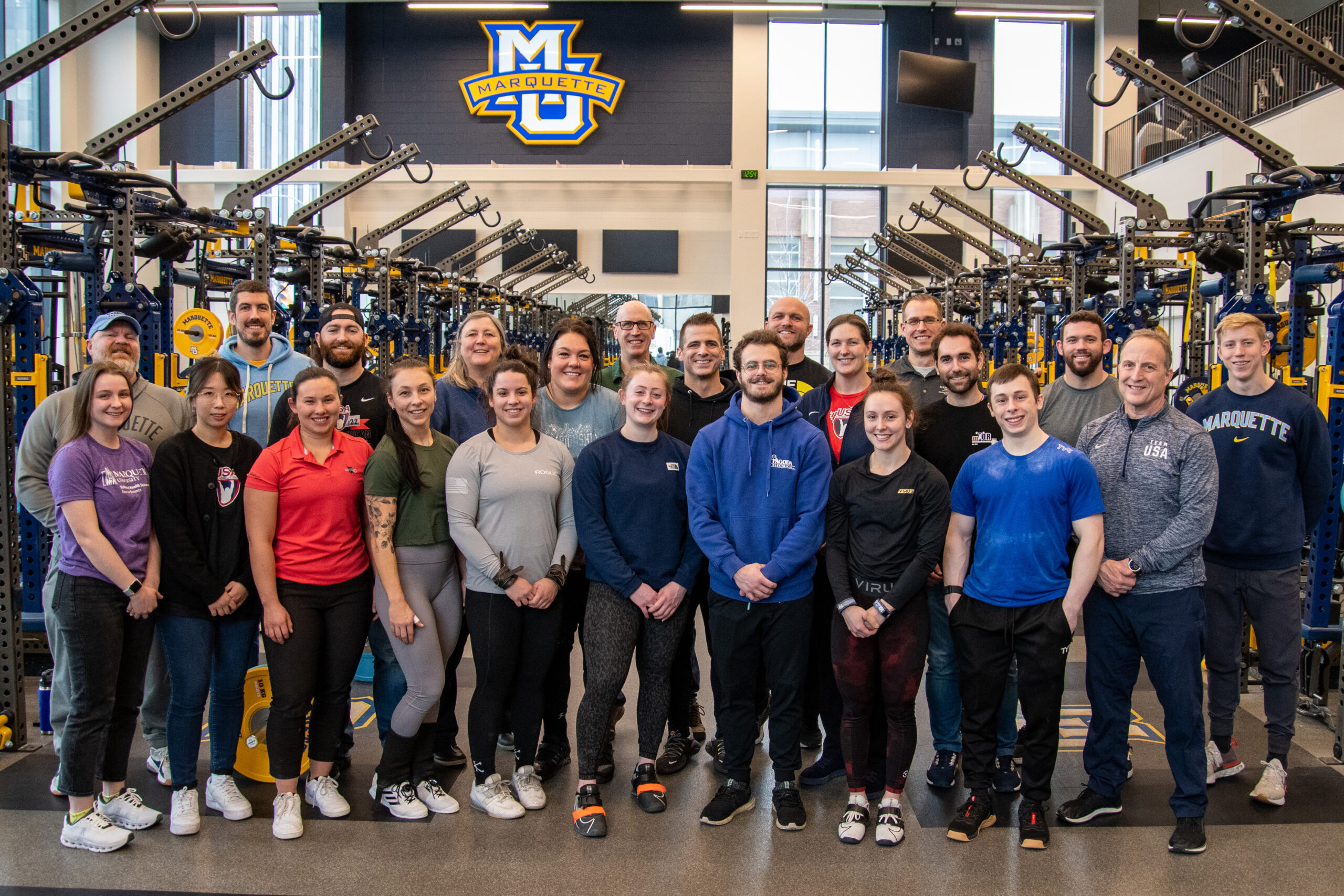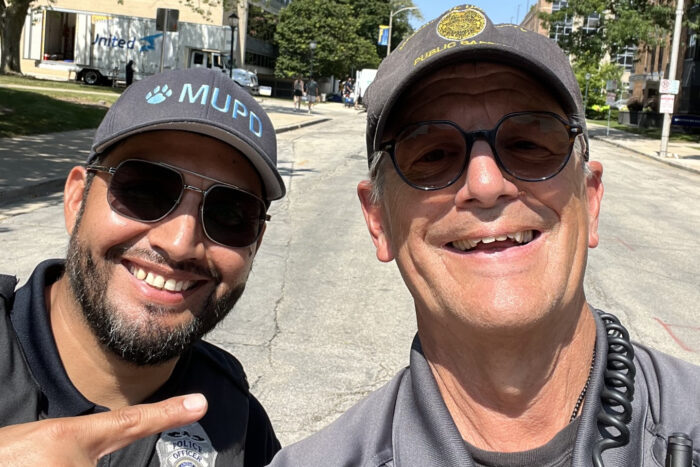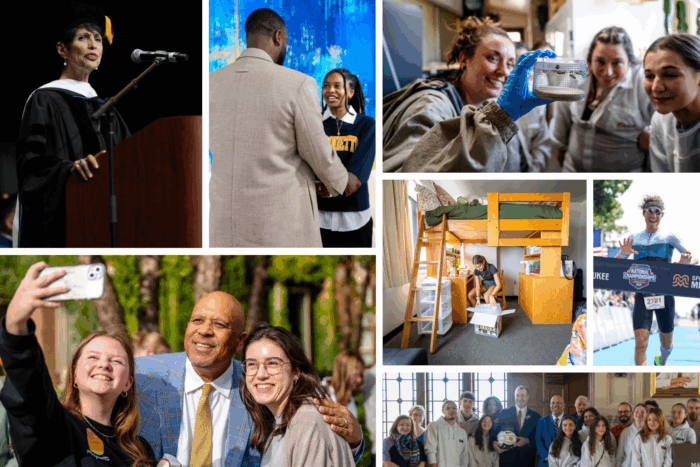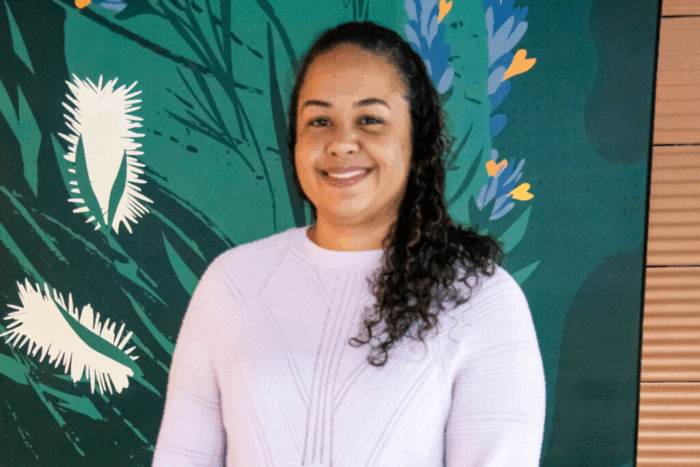Sometimes the best partnerships are born out of complete happenstance. Just ask Mike Gattone, USA Weightlifting’s senior director of sport performance and coaching education.
Charged with staying up to date on best practices in the weightlifting sphere, Gattone had stumbled upon an International Society of Biomechanics lecture on YouTube delivered by Dr. Kristof Kipp, associate professor of exercise science in Marquette’s College of Health Sciences.
“We exchanged emails and soon we were getting lunch and touring Marquette’s facilities, exploring a partnership,” Gattone recalls. “The partnership grew from there to what it is today.”
Kipp’s research focuses on sports biomechanics; his lab analyzes sporting activities and motions through a mechanical, analytic lens.
“Through that lens, we aim to come up with ways to quantify performance, technique, key performance indicators and what specific technical characteristics determine performance,” Kipp says.
And in weightlifting, technique is the name of the game — so a partnership between USAW and Kipp’s lab was a perfect way for Gattone to continuously educate himself on the sport’s best practices.
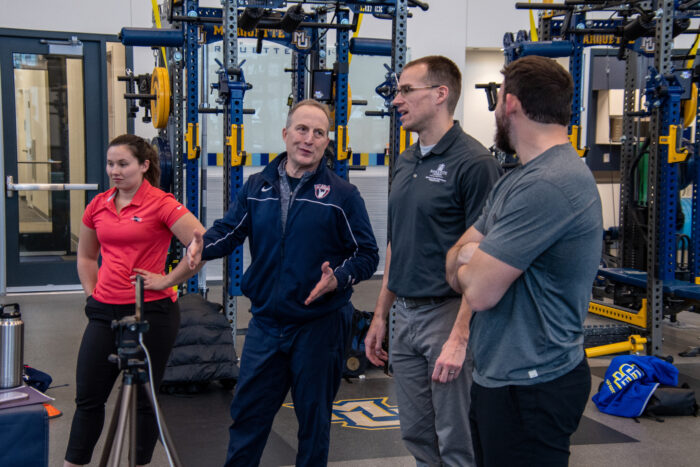
At a recent camp, USAW athletes were monitored at the Athletic Human Performance Research Center, as Kipp and his graduate student research team collected data on the athletes’ exerted forces and movement patterns during each lift, as well as any trends that surfaced as they added more weight to their lifts.
“Force plates mounted in the floor at the AHPRC allow us to track how much force an athlete is exerting throughout their lift,” Kipp says. “The plates even independently track how much force is exerted through each foot, as well as where the athlete’s balance is on each foot as they look to complete heavier and heavier lifts.”
Interestingly, failed lifts sometimes provide the most helpful data to the athletes as they fine tune their skills.
“We can point specifically to what went wrong when an athlete failed a lift,” Kipp says. “It could be because they didn’t generate enough force, their balance was off or one of many reasons, but we can present this information to Mike [Gattone], who can then coach the athlete to better improve their technique.”
Technological advances and research like Kipp’s have shifted the way weight training is done, giving coaches the ability to instruct athletes from states away.
“No longer do we have to always have a coach by the athlete’s side to help them train,” Gattone says. “This year is the most actionable year an athlete has when they’re trying to qualify for the Olympics. With the help of the data Kristof [Kipp] collects, we can understand how to coach our athletes, so they improve and reach their ultimate goal of competing and possibly earning a medal at the Olympics.”
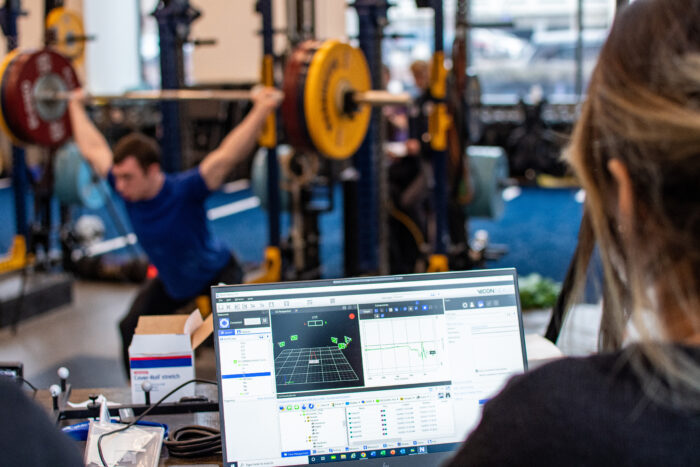
Assisting in other sports, everyday lives
Biomechanics doesn’t just help weightlifters — it’s useful to all athletes.
“Biomechanics research acknowledges that every person has a different movement profile,” Kipp says. “Elbow injuries are very prominent in baseball, and to reduce risk of injury, the easy answer is to throw slower, which obviously isn’t the most practical as a pitcher. The idea is there might be some technical characteristic or a specific movement that allow players to throw faster without increasing the load at the same time.”
Kipp plans to study just that by examining slot angles in baseball players and how it relates to ulnar collateral ligament injuries.
Biomechanical analyses can also assist non-athletes as they age and need better techniques to do simple tasks, such as standing up from a chair.
“One of my graduate students is interested in the muscular requirements needed for adults to stand up, which requires extension of the hip, knee and ankle joints in a similar fashion to the initial pull in weightlifting,” Kipp says.
He adds, “Overall, in biomechanics we want to understand why a person moves the way they do, and how can we improve their movement in a large, global sense to increase their performance, decrease risk of injury in sports and occupational activities of daily living.”
